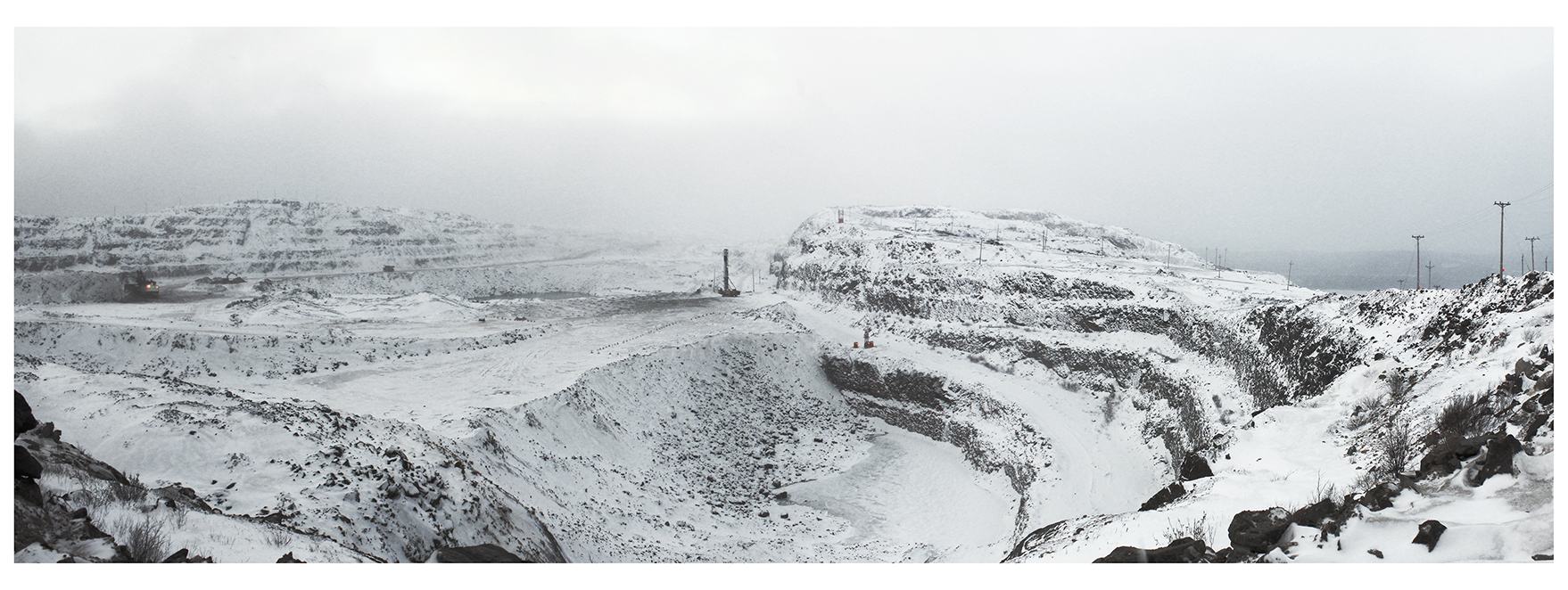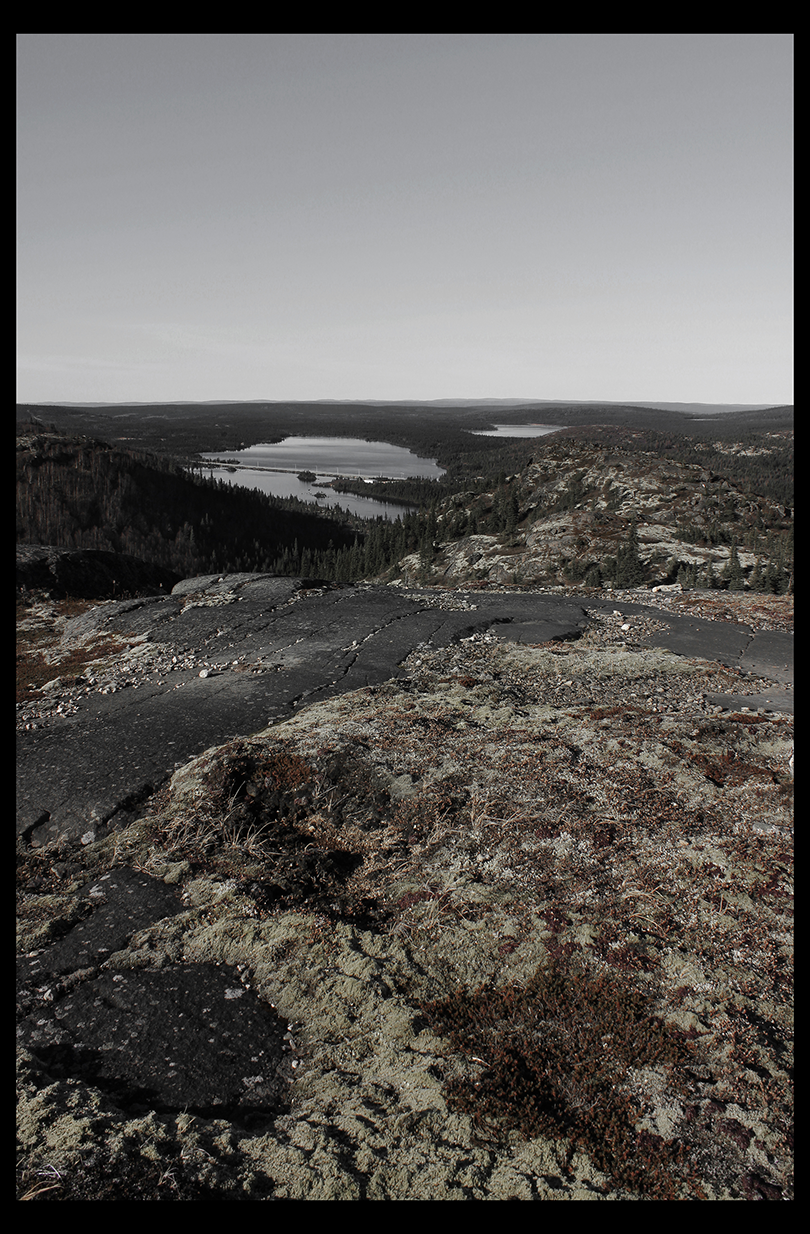In an increasingly globalized world, where the capitalist model is ubiquitous, the central question in the attempt at group classification concerns the link between the commercialization of a work force and the social stratification of the population in terms of class, gender, and ethnicity. The growing demands of globalization lead to new and innovative modes of production, which in turn transform the dynamics involved in defining and regulating resources and populations. In current national affairs in Canada, the debate over the exploitation of Quebec’s northern resources is exemplary.
The project to exploit Quebec’s northern riches is a relatively recent phenomenon. Given the vicissitudes of this process, it seemed pertinent to reexamine the changes in the landscape. In Fermont, a town located in northern Quebec, mining companies have shaped the landscape into a panorama of exploitation, both of northern natural resources and of workforces. These photographs illustrate one of the most extensive opencast mines in North America, the iron mine of Mont-Wright, the hydro-electric dam, Manic 5, the workers’ camps, and the provincial 389 North road.










 Born in Notre-Dame-du-Portage in the Bas-Saint-Laurent region,
Born in Notre-Dame-du-Portage in the Bas-Saint-Laurent region,